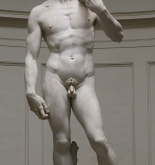Did you know that the world’s oldest advertising was discovered in Thebes, Egypt? Today, advertising affects every aspect of our lives. It is impossible to escape due to the media and new technology. Everywhere on the planet, we are under “uncontrollable pressure” to acquire and consume. Some consider advertising as the art of persuading the public to spend money on items they do not require. According to British historian Hobsbawm, the twentieth-century civilization is a “affluent society,” which implies that our lives are consciously and subconsciously governed by the need to buy. Without a doubt, our parents’ extravagances have become our necessities.
The oldest advertisement in the world
However, advertising is not new. Its traces may be traced all the way back to the dawn of civilisation and commerce. Since the introduction of items to the market, the necessity to communicate them developed, and the most prevalent method of doing so was spoken communication.
The issue today is: Where was the world’s first advertisement discovered? We trace it all the way back to 3000 BC. Dyehuty was regarded the deity of knowledge in Egyptian civilisation and ruled over all other gods. As the founder of the language, he confided on the scribes in order for them to record his facts in writing. Thus, writing became divine, as the gods do not lie.
We discovered propagandist advertising (political and religious) in a number of the obelisk inscriptions, as well as in the Narmer Palette (currently in the Egyptian Museum). Although, in the instance of the pallet, and according to certain scholars, the true goal was to publicize the king’s territory on behalf of the gods.
Many of you may have seen pictures of the pharaoh smiting his adversaries with a mace in several bas-reliefs throughout ancient Egypt’s history. Additionally, it serves as a propaganda emblem for royal power. However, papyrus proved to be a far more workable medium than stone for these initial pronouncements.
As a result, the first advertising slogan, the papyrus of slave Shem, arose in the rich city of Thebes. In it, a fabric merchant named Hapu offers a prize (a complete piece of gold) to people who report the slave Shem’s location and return him to the store, where the most exquisite textiles are created to suit each individual’s taste. He was selling his product subtly while attracting attention.
The papyrus is currently housed in London’s British Museum. However… what became of the slave Shem? Was he ever apprehended and returned to his master? Nope. Shem evaded his fate. He was never heard from again, and additional papyri indicate that Hapu expanded their business with the currency he obtained via his smart advertising technique.
How did the ancient Egypt advertise their product?
“Today’s advertising is all about selling Corn Flakes to those who consume Cheerios.” (1994, Levinson) Leo Burnett, the advertising legend, is able to convey insight into the complicated and ever-changing world of advertising with a single simple line. While you may not remember Burnett’s name, you are certain to recognize his work, since he is credited with bringing some of the world’s most recognizable brands to life, including the Pillsbury Doughboy, the Keebler Elves, the Marlboro Man, the Jolly Green Giant, Tony the Tiger, and Ronald McDonald. What made Leo Burnett effective was their inventive use of textual, aural, and visual aspects to pique the target demographic’s imagination and emotions. These factors, together with the development of communication technologies, have enabled advertising to expand into an entity that combines information, innovation, and science in order to serve as a teacher of new technology.
While we will study advertising psychology in the digital era, it is critical to understand advertising’s development and, more particularly, the technologies that shaped its basis. The printing press, radio, television, and, more recently, the Internet are all examples of media that are used to educate, enlighten, persuade, and communicate (Sample, 2007).
These were the activities during the commencement of the advertising age. In pre-literate societies, street callers announced the arrival of ships and goods, as well as the locations of merchants’ tables to sell their fruits and vegetables (Reference.com, 2010). The street signs would be shaped like whatever was being offered in the stores, whether it was a boot for shoes, a diamond for jewelry, or a sack of wheat for baked products (Reference.com, 2010). In Pompeii, advertisements on shop signs for drinking, dining, and lodging facilities were primarily rudimentary in character, but there are some examples of “beautiful pictures and convincing wording” (Rokicki, 1987). Pompeii’s walls were strewn with texts in what may be regarded the world’s first instance of billboard advertising (Sampson, 1875). Additionally, politicians’ campaign slogans would be shown (Reference.com, 2010). Scholars classified all of these inscriptions, which were written in Latin, into three categories: formal inscriptions, graffiti, and dipinti. The first and most formal style was also the most durable, as stone served as the primary canvas. It would be used to publicize philanthropic gestures, as well as to honor and immortalize public works initiatives. Graffitti, which literally translates as “scratches,” was a more straightforward engraving method that was quite popular in Pompeii. The last category, dipitni, included wall murals intended to advertise elections or to notify the public about future sporting events (Rokicki, 1987).
Papyrus was the preferred medium for posters and notifications in Egypt, whereas commercial enterprises used painted walls or stones. The practice of painting walls or stones dates all the way back to 4000 BCE with the Indians and their rock art. This is an excellent illustration of how advertising media evolved across very different civilizations (Reference.com, 2010).
The Evolution of Advertising: From Papyrus to YouTube
The printing press ushered in a slew of changes, from affecting politics and family life to striving for universal literacy (Ong, 115-116). The printing industry also underwent enormous changes, since scribes who had previously written books, weekly newspapers, and advices by hand were no longer required. Those specializing in decorating, illumination, or painting retained work for a time, as this treatment was given to certain printed volumes far into the following century (Clement, 1997). It was at the end of the 1400s that half-title pages began to appear in books, listing the book’s title and author’s name. This not only promoted the book’s subject, but also served as a promotional tool for the author, and eventually evolved into the title page present in most books today. This is another example of how advertising mediums have evolved, since the ancient technology of printing revolutionized the way books and other printed media were formatted (Clement, 1997).
The first coffee advertisement was published entirely in text, without visual features, using the aforementioned linguistic elements. It first appeared in the Publick Advisor on May 26th, 1657:
In Bartholomew Lane, on the back side of the Old Exchange, the drink known as coffee is to be sold. It is a very wholesome and physical drink that closes the orifices of the stomach, strengthens the internal heat, aids digestion, quickens the spirits, and makes the heart lightum; it is also beneficial against eye-sores, coughs, or colds, rhumes, consumptions, head ache, dropsie, gout, scurv (1958, Wood, p.32)
As it is hard to tell whether the author of the commercial felt coffee was the magical cure that it is made out to be, it is noteworthy to note that while the media utilized for advertising has altered, advertisers’ strategies have remained rather constant.
Eventually, black-and-white and color photographs became widespread in newspaper stories with textual content.
The development of the radio in the 1920s enabled oral narrations and storytelling to reach people directly in their homes for the first time. Advertising was able to establish a link between the human voice and the emotional appeal of drama and the items or services they were attempting to promote. This 26-second Old Spice commercial exemplifies this method perfectly:
The advent of radio energized the advertising business, giving the creative process a new dimension (Wood, 1958). Commercial advertising reached a new level with the introduction of television, as radio programs and advertisements were changed by the addition of a visual element. It swiftly became the main medium for advertisements (Wood, 1958) until Tim Berners-Lee and Robert Cailliau created the World Wide Web in 1990. Berners-concept Lee’s for what would become the Internet was modest in comparison to the commercial entity that it has grown into today. A complex combination of words, sounds, and visuals employed by advertising to attempt to capture the public’s attention (Bolter, 68-69). Advertising is so complicated that it has been acknowledged as a science, particularly the psychology of effective advertising campaigns.
It is nearly impossible to watch television or surf the Internet without seeing at least one commercial advertising. Advertisements on television are typically easily identifiable. For example, product placement occurs when commercial items are visible, such as Coca Cola bottles on American Idol, or when a scenario is structured to have an actor discuss a specific feature of a product, such as a vehicle or a smartphone. The latter has grown in popularity as a result of the introduction of the digital video recorder, which enables viewers to record live television and skip commercials.
The most advanced advertising strategies and approaches are based on statistics, sophisticated algorithms, browsing and viewing patterns, geo-specific interests, and a variety of other characteristics. Additionally, they have developed into a showcase for cutting-edge technology for displaying dynamic text, sounds, and pictures used by marketers to sell their products. While the product’s quality remains critical, it is how the product is promoted that determines its success or failure.
Apple is one of the most successful advertisers. This is an unusual statement given that Apple is a technological firm, yet Apple is renowned for both the aesthetics of their technology and their multi-million dollar advertising campaigns, which began in 1984 with the publication of what is widely considered as “The Greatest Commercial of All Time.”
This launched a series of ground-breaking Apple advertising that combined oral and literal aspects to fascinate the viewing audience. The most effective of these advertisements are those for the iPod:
Advertisers’ favorite websites in the Internet era include sites like Facebook.com and YouTube.com. Indeed, their whole operation is reliant on advertising revenue. Advertisement technology have improved to the point where they can display adverts that are developed particularly for the user visiting the website. Google.com is another great example; their cloud-based email program Gmail features text-based adverts above your inbox. Advertisements are produced depending on the keywords included in the email messages you have received.
Advertisers’ psychology has advanced to the point where they are utilizing several types of advertising media and the most effective components of each to reach the broadest potential audience. The following films demonstrate how Old Spice’s message evolved from the radio campaign you heard earlier to a television commercial to a collection of videos on YouTube.com, each dedicated to a specific person.



